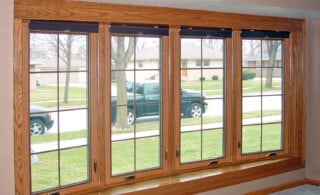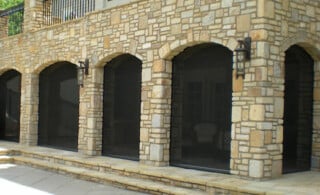
Modern windows rely on a wide array of technologies to achieve a level of energy efficiency as high as five times that of traditional windows. All that technology can also be confusing. Terms like “low-E glass” and “argon gas” don’t mean much to the average consumer. While you needn’t feel overwhelmed by these terms, a basic understanding of thermal replacement window ratings will help you choose the window that’s best for you without blindly relying on a sales pitch.
U Factor Rating
An organization called the National Fenestration Ratings Council (NFRC) has developed a rating system based on the U factor. The U factor is the rating most homeowners look at first and for good reason. This rating measures the heat loss that occurs through the window. Most homeowners choose to install thermal replacement windows because of the heat loss that occurs in the winter with their old windows. Most windows now carry this rating so it’s becoming easy to make comparisons. Generally speaking, windows all have a U factor between 1.3 and .2, and the lower the number, the better.
Window Type U Factor Ratings
- Old metal casement window 1.3
- Good quality single-pane window 1.0
- Good single-pane with storm window .6
- Double-pane with low-E glass .4
- Triple-pane with low-E glass .25
Ready to start your New Windows?
Find ProsMore Thermal Replacement Window Ratings
You don’t need to get caught up in two hour sales pitches that dissects every last technological term, but nor do you necessarily want to run to the simplest answer, either. Many websites out there will tell you to ignore everything but the U factor. If you live in a cold climate, this may be the most important rating, but it’s not the only one. If you live in a warmer climate, the solar heat gain coefficient is probably just as important to your overall window performance. If you live in a humid climate, you may want to consider the condensation resistance rating. These aren’t difficult, technical terms. Here’s a brief description of common performance ratings that may be important for your replacement window rating.
- Air Leakage: This rating measures how much outside air will infiltrate through your window installation. Fixed and awning style windows are usually the best. The range is typically between .1 and .3, and the lower the number, the better.
- Solar Heat Gain Coefficient: Naturally, this is the exact opposite of the U factor. It measures the windows heat gain during the summer months. It’s expressed as a number between 0 and 1 and, again, the lower the number, the better.
- Condensation Resistance: This rating measures the window’s ability to resist the formation of condensation. As ventilation and insulation continues to be geared more toward energy-efficiency, condensation, especially on windows, is becoming more and more of an issue in homes—in this case, the higher the number, the better.
- Visible Transmittance: This window rating has more to do with homeowner preference than superior performance. VT measures the amount of light that is allowed to pass through the window. The higher the number, the more daylight you can expect in your home.
 Thermal Replacement Windows – Questions & Answers
Thermal Replacement Windows – Questions & Answers  Low-e Windows – Are They Worth the Investment?
Low-e Windows – Are They Worth the Investment?  Smart Glass: A Solar Light Switch
Smart Glass: A Solar Light Switch  The Benefits of Weather Stripping
The Benefits of Weather Stripping  Solar Screens: Saving You from the Sun
Solar Screens: Saving You from the Sun 

Are You Familiar With This Topic? Share Your Experience.